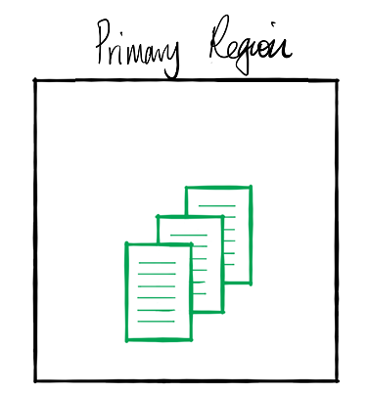Azure Storage Account Updates
I have previously produced a series of posts on Azure Storage Accounts. Since then, there have been a few updates to the Storage Account offerings Microsoft provides.
Previous Storage Series:
Storage Options (https://www.refactored.pro/blog/2019/6/28/azure-storage-options-explained)
Storage Replication (https://www.refactored.pro/blog/2019/7/31/azure-storage-replication)
Storage Security and Authentication (https://www.refactored.pro/blog/2019/10/2/azure-storage-data-security-and-authentication)
Replication
The previous post on Storage replication covers the long-running options for replication LRS, GRS and RA-GRS and the more recent addition ZRS. In the past year, Microsoft has released into general availability Geo-Zone Redundant Storage (GZRS) and Read-Access Geo-Zone Redundant Storage (RA-GZRS).
Local Redundant Storage (LRS) has three copies of the data stored within a single location on redundant hardware.
Zone Redundant Storage (ZRS) ensures that three copies of data are stored within different availabilities zones within a single region. The use of availability zones gives additional resilience when compared to LRS storage accounts due to the data being in different physical locations within a single region, mitigating a single datacenter outage.
Geo-Redundant Storage (GRS) and Read-Access Geo-Redundant Storage (RA-GRS) tiers take the concept of LRS and add three more sets of data by replicating the storage account asynchronously to a second paired Region.
GRS storage accounts only allow read and write operations to be done in the primary Region. You only get access to the secondary Region during a failover event or full region outage. RA-GRS gives you the option for reading the data from the secondary Region at all times.
The introduction of GZRA and RA-GZRS storage combines the concepts of Zone Redundant Storage and Geo Redundant Storage. In your primary Region, the data is copied across three different availability zones to ensure the data is not in a single datacenter or physical location. The data is then asynchronously replicated to a single location where an additional three copies of the data are stored.
Please note that these new Replication options are only available in primary regions that support Availability Zones.
Comparisons of SLAs
The following tables show the current SLAs for Read and Write operations and object durability for the various storage redundant types.
Percent durability of objects over a given year
SLAs for Read Operations
SLAs for Write Operations
From the tables above, you will see the SLAs are identical for GRS/RA-GRS and GZRS and RA-GZRS. The availability offerings are very similar, so you get similar SLAs.
So why should you use GZRS?
The primary difference between GRS and GZRS is how data replication works in the Primary Region. The replication to different availability zones means you can survive a full datacenter outage without having to initiate a failover to the secondary Region. GZRS and RA-GZRS should be used for applications and scenarios that require maximum availability and durability of the data.
Supported storage account types
Finally, we will look at supported storage types. As GZRS and RA-GZRS are both new, they do not support all the available storage account types offered by Microsoft.
In summary, the new GZRS and RA-GZRS options are designed for applications that need maximum availability and durability of the data. They combine the benefits of Geo-Redundant Storage with the added resilience of Zone-Redundant storage, ensure access to your data even during a full data center outage in the Primary Region. But this offering is only available for General-Purpose v2 storage accounts.
— Matt Boyd









